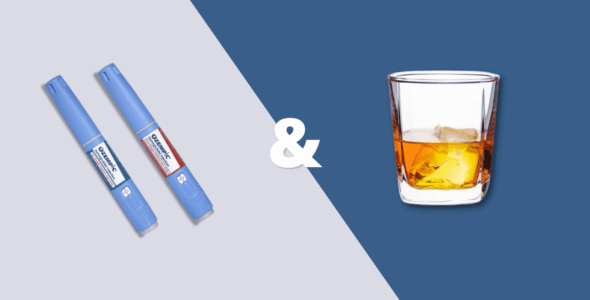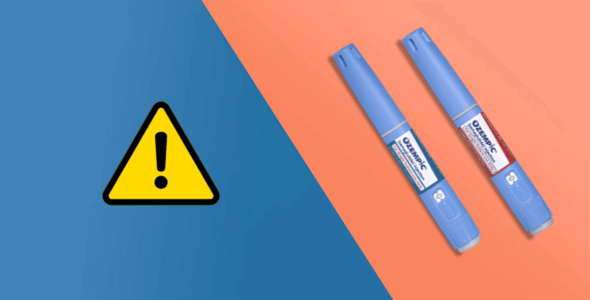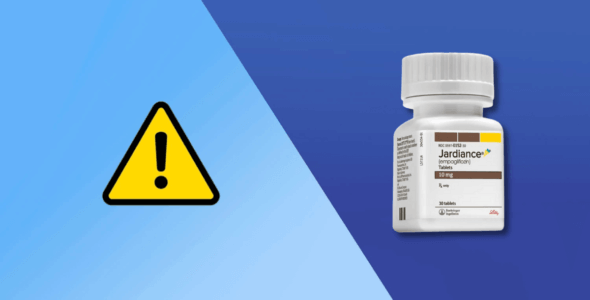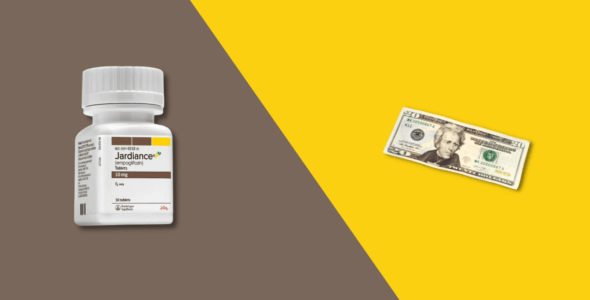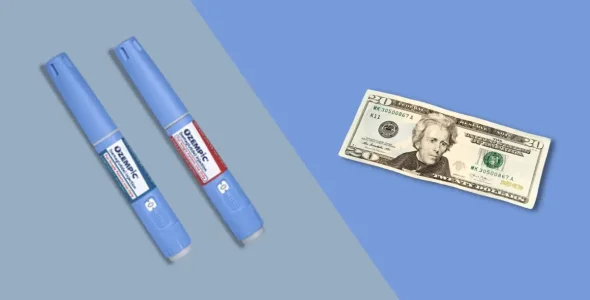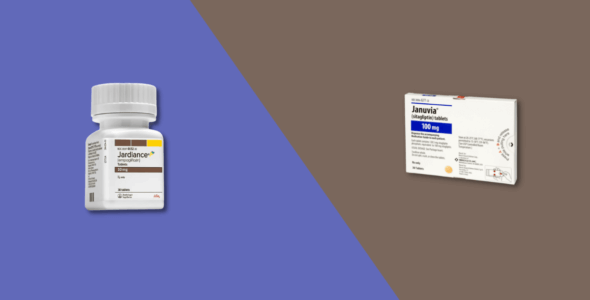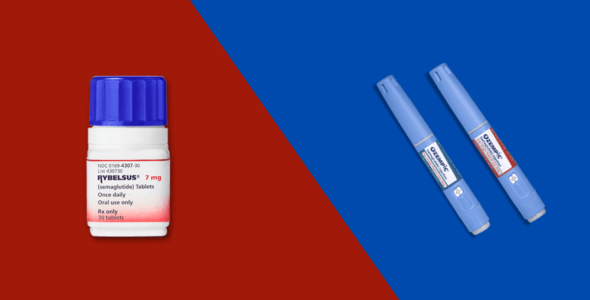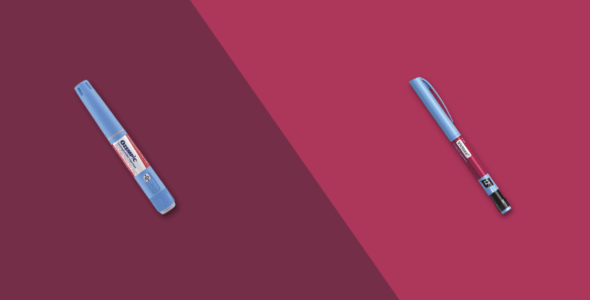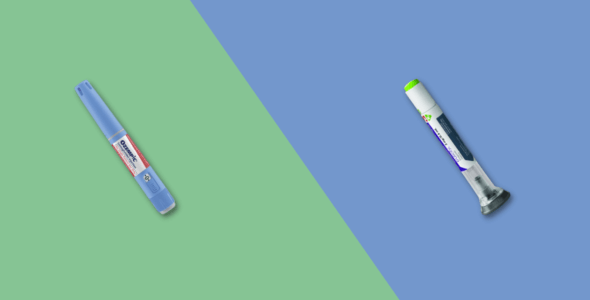The aim of all diabetes care is to establish well-controlled blood glucose levels and prevent complications. Extensive studies in the US (the Diabetes Control and Complications Trial) have shown that any improvement in blood glucose control will reduce your risk of developing complications. Diabetes medication is the main way to prevent complications and gain glycemic control but the huge number of medications available can be overwhelming.
Ozempic and Jardiance are both diabetes drugs that have been approved by the U.S. Food and Drug Administration to control blood glucose levels in type 2 diabetes patients. Both drugs have proven to be effective in clinical trials but no single diabetes treatment is best for everyone and what works for one person may not work for another. Let’s take a deeper look into the differences between Ozempic and Jardiance.
What is Ozempic?
Ozempic is an FDA-approved prescription drug made by Novo Nordisk. It is used for the treatment of type 2 diabetes to prevent glucose levels from rising after eating, by slowing the rate of digestion and helping the release of insulin in your body.
This medicine is used to:
- Lower your blood sugar levels when used alongside dietary and lifestyle changes. Ozempic is not used to treat type 1 diabetes or diabetic ketoacidosis
- Lower the risk of a heart attack in type 2 diabetics. It causes your pancreas to secrete more insulin, helping to lower your blood sugar and reduce your risk of major cardiovascular events, like heart attacks and strokes, if you have heart disease
Ozempic is a diabetes medication that is likely to have been prescribed because the combination of improving diet, increasing exercise, bodyweight reduction, and metformin medication has not achieved adequate blood sugar control for you.
Some of the advantages of taking Ozempic are suppression of hunger and modest weight loss, which are desirable for diabetics.
How does Ozempic work?
The active ingredient in Ozempic is semaglutide. It is classed as a glucagon-like peptide-1 receptor agonist (GLP-1 receptor agonist). Semaglutide can lower blood sugar through a mechanism where it stimulates insulin secretion and lowers glucagon secretion by selectively binding to and activating the GLP-1 receptor.
Unlike many other treatments for type 2 diabetes, semaglutide is not a type of insulin. It is a human hormone that acts on different parts of your body. Semaglutide encourages your pancreas to produce more insulin, helping to lower your blood sugar after you’ve eaten. It also appears to increase the growth of the cells in your pancreas that produce insulin (beta-cells).
The semaglutide injection is injected under the skin (subcutaneous) usually once every 7 days. The injection sites are the thigh, abdomen, or upper arm. The fatty tissue just under your skin is the ideal place for Ozempic to be absorbed gradually. If you inject it deeper into your muscle your body will absorb it too quickly. The effects may not last as long and will additionally be more painful. Judging the depth correctly can be quite difficult, particularly if you are slim but it is important to master the technique to stay safe. A healthcare professional from your diabetes care team will advise you on the correct way to inject. The dose you receive is based on your medical condition and your response to treatment.
If you miss your weekly dose of Ozempic and there are less than 3 days until your next dose, do not take the missed dose. Store Ozempic injections at room temperature or in the refrigerator.
What is Jardiance?
Jardiance is the brand name of a prescription drug manufactured by Boehringer Ingelheim/Eli Lilly Pharmaceuticals. It is an FDA approved medicine prescribed to:
- Improve blood sugar levels in adults with type 2 diabetes mellitus alongside diet and exercise
- Lower the risk of cardiovascular death from a heart attack, stroke, or heart failure in adults with type 2 diabetes who also have heart disease
This medication can help you lower your blood sugar levels when taken alongside dietary and lifestyle changes. It causes you to excrete more sugar in your urine than you would normally. This lowers your blood sugar and helps to reduce your risk of health conditions like cardiovascular disease. Jardiance can not be used to treat type 1 diabetes or during breastfeeding. It is not known if this drug passes into breast milk.
Jardiance active ingredients
The active ingredient in Jardiance is called empagliflozin. It is classed as a sodium-glucose co-transporter 2 inhibitor (SGLT2 inhibitor). It lowers your blood sugar levels by causing you to lose more sugar in your urine than you usually would.
Your kidneys help recycle sugar back into your blood from your urine with the help of a protein called sodium-glucose co-transporter 2 (SGLT-2). Empagliflozin blocks this protein from working, reducing how much sugar your kidneys recycle. This makes you lose more sugar in your urine, rather than it being recycled back into your blood.
Jardiance comes as an oral tablet that you take with water. Doses available are 10mg and 25 mg. If you miss a dose, take it as soon as you remember. If it is near the time of the next dose, skip the missed dose and take your next dose at the regular time.
Differences between Ozempic and Jardiance
- Ozempic and Jardiance belong to different drug classes and work in the body differently. Ozempic is a glucagon-like peptide-1 agonist and Jardiance is a sodium-glucose co-transporter 2
- Jardiance increases glucose levels in the urine therefore common side effects can include urinary tract and yeast infections. Ozempic causes gastrointestinal side effects such as nausea, vomiting, diarrhea, and stomach pain
- Ozempic is administrated as a subcutaneous injection in 0.5 mg, 1 mg, or 2 mg doses and Jardiance is taken orally in tablet doses of 10mg or 25 mg
- Ozempic is taken once weekly and Jardiance is taken daily
Ozempic side effects
The most common side effects of Ozempic include:
In rare instances, Ozempic can cause more serious side effects, including:
- An increased risk of thyroid tumors, symptoms such as hoarseness, a lump or swelling in the throat
- Kidney problems, including kidney failure
- Serious allergic reactions causing swelling under your skin, normally in your eyelids, lips, hands, or feet. Swelling of your mouth, tongue, or throat leading to shortness of breath
- Inflammation of your pancreas (pancreatitis). Symptoms of pancreatitis include severe abdominal pain /stomach pain, nausea, and vomiting that doesn’t stop
- Changes in your vision
- Very low blood sugar (hypoglycemia) causing shakiness, fast heartbeat
For medical advice about side effects, talk with your health care provider and also read the medication guide and instructions for use that comes with Ozempic.
Jardiance possible side effects
Common side effects of Jardiance include:
- Feeling more thirsty than usual
- Drowsiness
- A skin rash – this may be itchy and include raised bumps and blisters that leak fluid, and may cause your skin to redden
- An increase in cholesterol levels (this may show up in blood tests)
- Vaginal yeast infection
- Genital yeast infection in men
- Raised cholesterol levels
- Urinary tract infection (UTI)
- Increased urination
- Lightheadedness
- Weight loss
In rare instances, Jardiance can cause more serious side effects, including:
- Severe allergic reactions to the medication e.g. hives
- A rare but serious bacterial infection that damages tissue under the skin (necrotizing fasciitis) in the area between the anus and genitals (perineum), called Fournier’s gangrene
- Diabetic ketoacidosis is a potentially life-threatening condition where your body breaks down too much fat too quickly, causing you to produce high levels of blood acids called ketones. Symptoms include stomach pain, unusual tiredness, trouble breathing
- An increased risk of serious urinary tract infections
- A high and potentially harmful increase in your cholesterol levels
- Low blood pressure (hypotension)
- Kidney problems e.g. kidney disease and patients receiving dialysis
- Low blood sugar (hypoglycemia) particularly when used with other medications like insulin or sulfonylurea
- Dehydration
Ozempic drug interactions
- Any medications you take orally to reduce the risk of blood clots (oral anticoagulants) like warfarin
- Insulin – Ozempic can be used alongside insulin, but your doctor may change the dose of insulin you take and/or how often you use insulin
- Any other medications that are taken to treat type 2 diabetes
Jardiance drug interactions
Jardiance can also interact with other medications, which can limit its effectiveness, including:
- Any other diabetes medications, like insulin or sulfonylureas e.g glyburide
- Other medications that can lower your blood sugar levels, like diuretics (water pills), corticosteroids, estrogens, oral contraceptives, nicotinic acid, and calcium channel blocking drugs
Talk with your health care provider for medical advice regarding any side effects or drug interactions you may have. Read the medication guide and instructions for use that come with Jardiance for the full drug information. You are encouraged to report the negative side effects of prescription drugs to the FDA. Visit www.fda.gov/medwatch or call 1-800-FDA-1088.
Ozempic warnings & precautions
Don’t take Ozempic if you:
- Are allergic to the active ingredient semaglutide, or any of the other ingredients in Ozempic
- Have had, or anyone in your family has had a type of thyroid cancer called medullary thyroid carcinoma (MTC)
- Have an endocrine system condition called multiple endocrine neoplasia syndrome type 2 (MEN 2)
- Have pancreatitis
- Have type 1 diabetes (Ozempic is for type 2 diabetes only)
- Are under 18 years of age
Talk to your doctor before taking Ozempic if you:
- Have had any problems with your pancreas or kidneys
- Have ever had diabetic retinopathy
- Are pregnant or are planning to become pregnant
- Are breastfeeding or are planning to breastfeed
Jardiance warnings & precautions
Don’t take Jardiance if you:
- Are allergic to the active ingredient empagliflozin
- Are allergic to any of the other ingredients in Jardiance
- Have type 1 diabetes (Jardiance is for type 2 diabetes only)
- Are under 18 years of age
Talk to your doctor before taking Jardiance if you:
- Have any liver or kidney problems
- Have or have ever had problems with your pancreas, like pancreatitis or surgery on your pancreas
- Have a history of urinary tract infections or any problems with urination
- Often drink alcohol, or drink a lot of alcohol in a short period of time (“binge” drinking)
- Are going to have surgery in the near future
- Are eating less than usual or have changed your diet
- Are pregnant or are planning to become pregnant
- Are breastfeeding or are planning to breastfeed
Read the full prescribing information for Ozempic and Jardiance and always speak with your healthcare provider for medical advice about your medicine so they can monitor and evaluate your condition. Always inform your healthcare provider of all medical conditions, and any medications you are taking including over-the-counter meds and supplements.
Other alternatives to Ozempic and Jardiance
Other diabetes medications
Diabetes is much more than just having high blood glucose levels e.g. type 2 diabetics have a higher risk of heart attacks and strokes, therefore medications to control blood pressure and cholesterol are very useful.
Here are some of the most widely used medications:
- ACE inhibitors – act on your kidneys to treat high blood pressure
- AIIRA’s – reduce high blood pressure
- Aspirin – reduces the stickiness of your blood, making you less prone to heart attacks and stroke
- Statins – they lower your LDL cholesterol (considered the bad cholesterol) and raise your HDL (considered good cholesterol) helping to protect you against heart disease
Combination Oral Pills
Over time as a type 2 diabetic, your medication will change as your diabetes progresses. You may require multiple medications to keep your blood sugar level stable and within the safe range. Combination oral pills combine the effects of two medications in one drug.
Examples of combination medications for type 2 diabetes:
- Glucovance – metformin and glyburide
- Metaglip – metformin and glipizide
- Avandaryl – rosiglitazone and glimepiride
- ACTOplus Met – pioglitazone and metformin
- Avandamet – rosiglitazone and metformin
- Duetact – pioglitazone and glimepiride
Final note
In type 2 diabetes you do produce insulin, but your body can not use it effectively. There is usually a combination of a part failure of insulin production and a reduced response to the hormone. This is known as insulin resistance. Research does not give us a clear idea why some people develop this and others don’t, but lifestyle factors, e.g. lack of exercise and excess body weight can contribute to type 2 diabetes.
Ozempic and Jardiance work best when lifestyle changes are made:
Changing your diet can be an effective way to control and manage type 2 diabetes. Eating a poor diet can increase your weight, blood pressure, and cholesterol. A diet high in fat, sugar, and refined carbohydrates may also contribute to insulin resistance. Making the right food choices can have a significant effect on your condition. The following changes can help:
- Keeping to a healthy weight. Consume fewer calories, particularly from carbohydrates, and reduce sugar and sweet intake
- Increase your activity levels e.g. find a walking buddy to make it fun, take a daily lunchtime walk, use the stairs instead of a lift, and set a daily step goal
- Eating a healthy diet. Center your meals around lean protein such as chicken and turkey and healthy natural fats such as nuts, seeds, avocados, salmon, flaxseeds, and extra virgin olive oil
- Reduce smoking. Speak to your doctor for advice and support
- Reduce or eliminate alcohol in your diet. Speak to your doctor and loved ones for help
